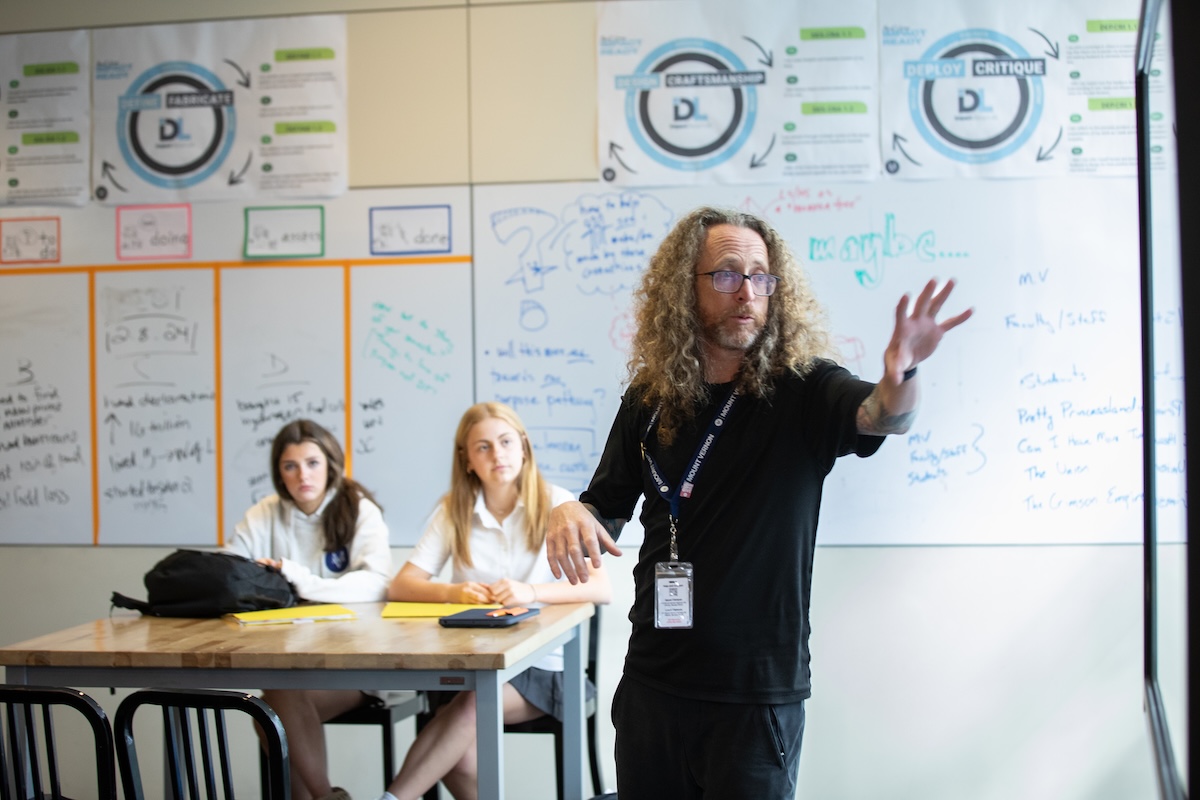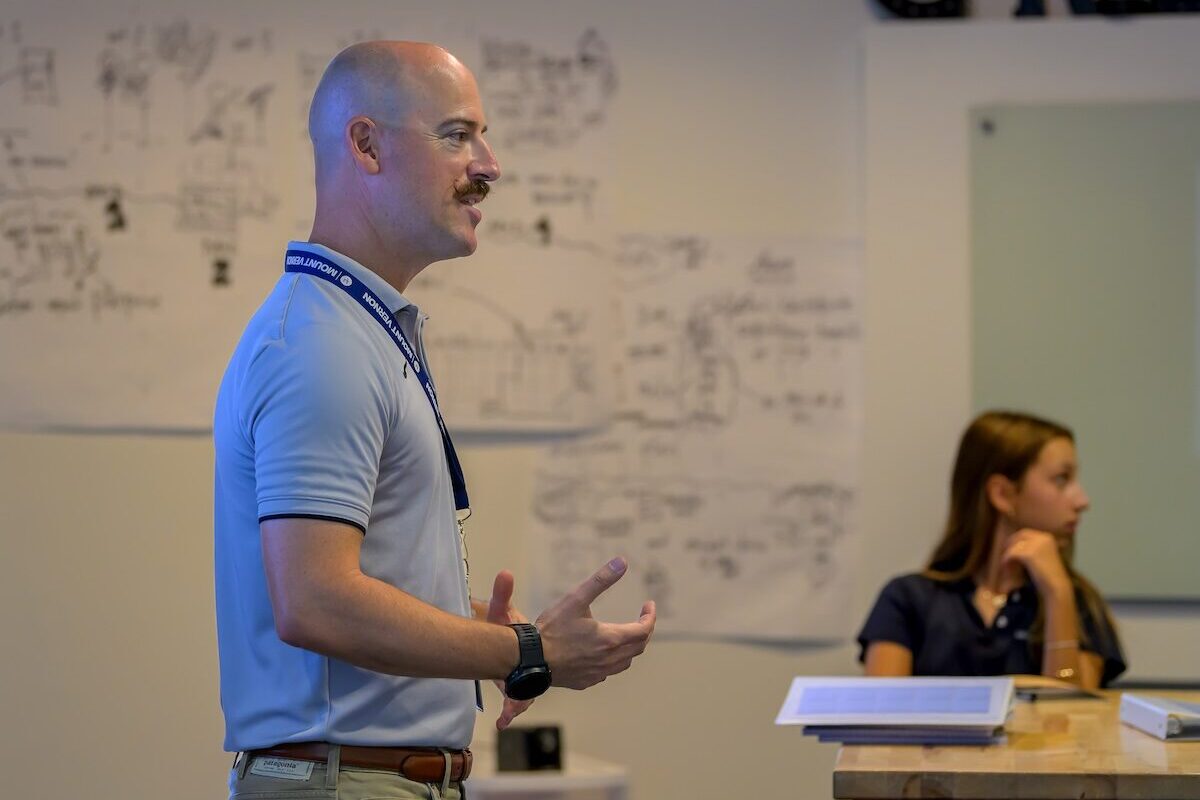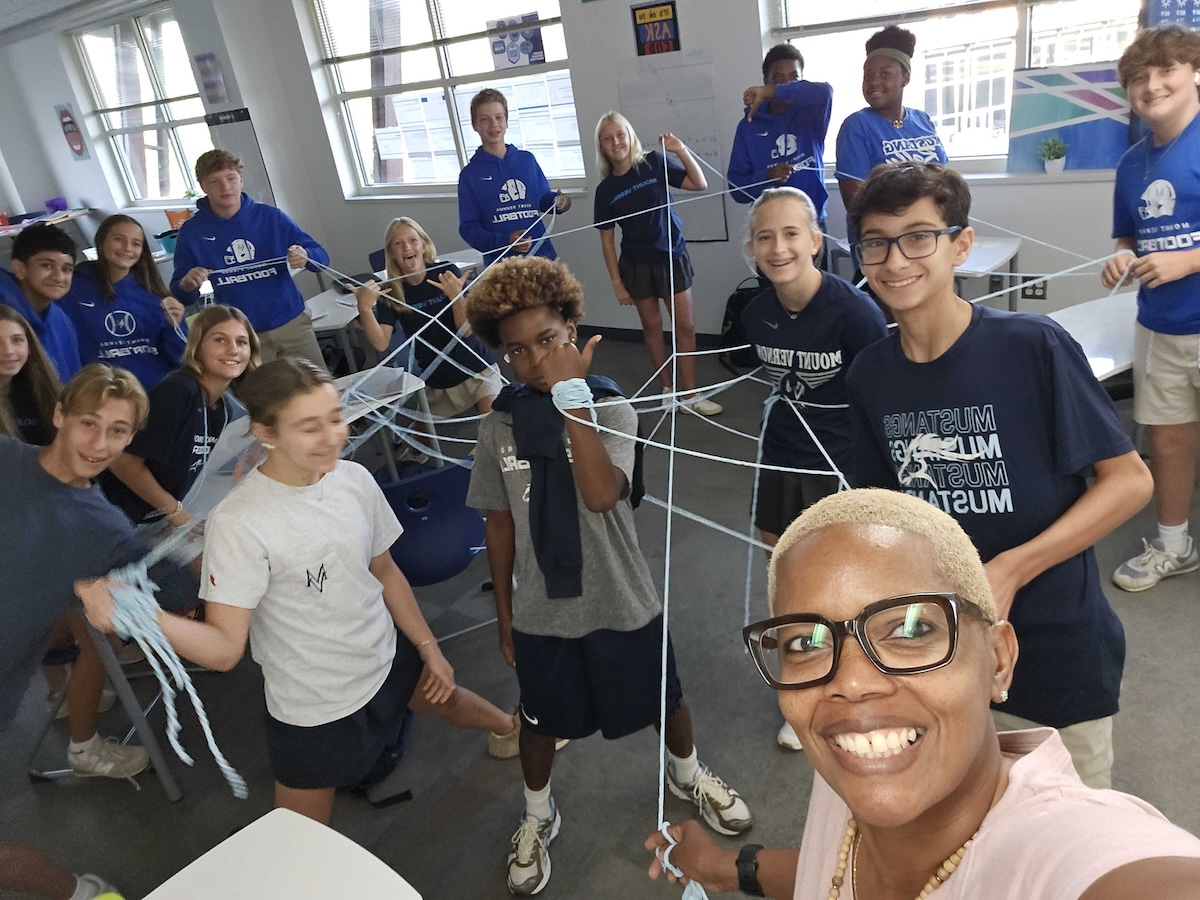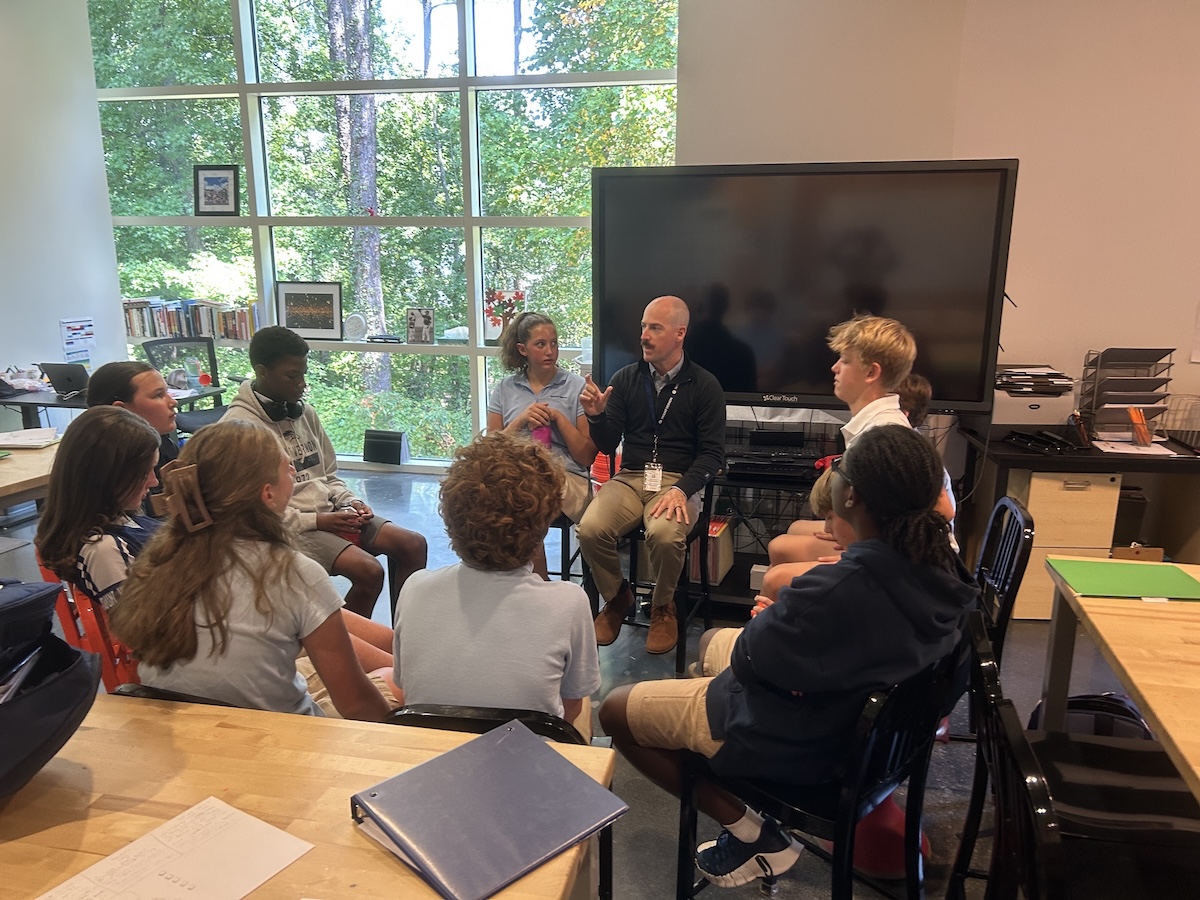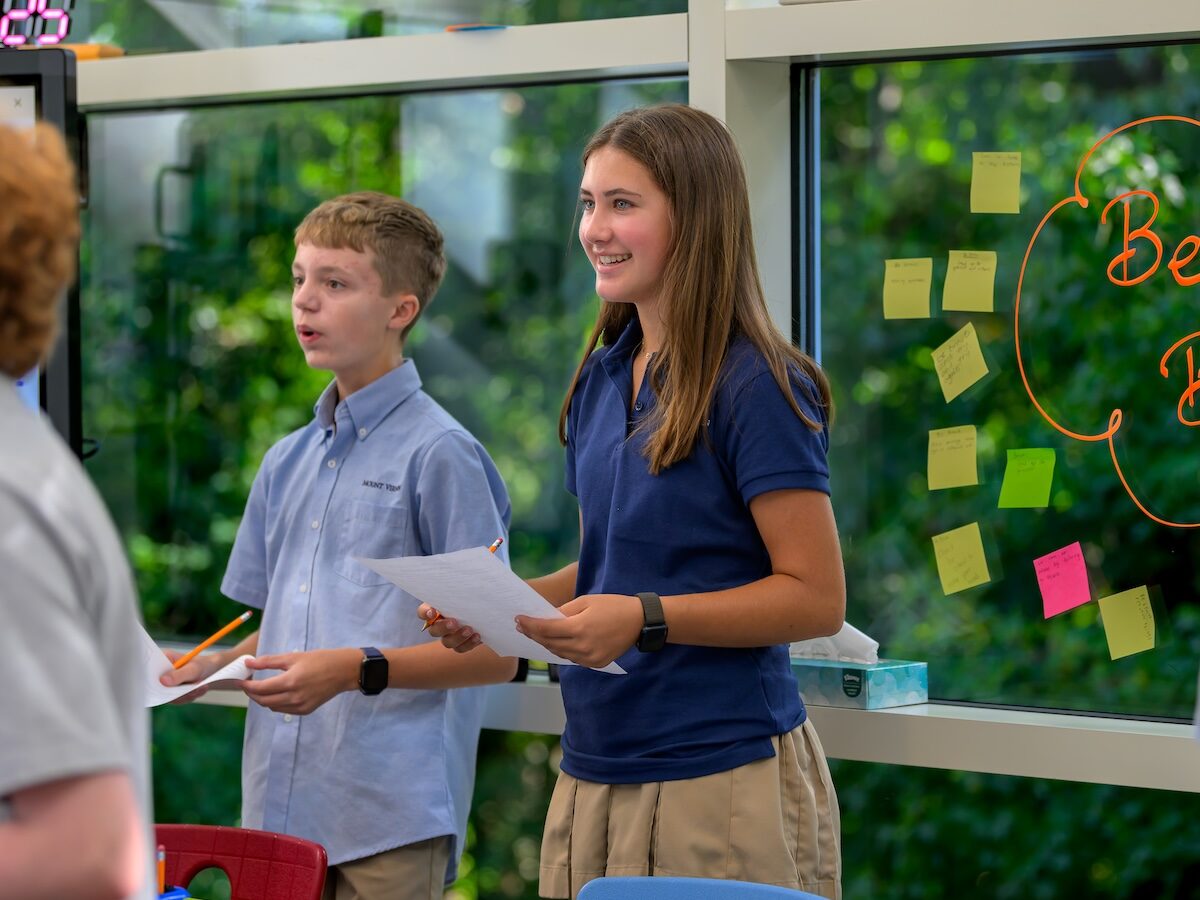Each spring, Mount Vernon Grade 8 students take part in one of the most transformative milestones of their Middle School years: the Grade 8 Summit. While Grade 5 students launch their Journey of Purpose by hiking Kennesaw Mountain and drafting their first purpose statements, Grade 8 students return to this work with more maturity, perspective, and courage. Their task is as lofty as it is personal: take what matters most to me and consider how it can become meaningful — even consequential — to others.
“It’s messy, fun, and beautiful work,” reflects Dr. Todd Wass. “If I had to describe it in one word, it would be iterative. Students try things, refine them, and come back stronger — and through that process, they discover clarity.”
Building from Identity
This year’s Grade 8 students began their purpose journey by diving deep into identity work — clarifying values, exploring essential questions of freedom and power in Humanities, and even creating “stained glass self-portraits” that reflect both who they are and who they want to become.
In Impact Design Lab (IDL), students engage in a multi-step process to surface what matters most to them. They began with a wide-ranging brainstorm, listing dozens of potential values. Next, they mapped those values into an identity and values web, visually connecting themes and patterns. From there, the task became one of refinement — narrowing a long list down to a handful of values that truly represent who they are.
“This is where the real work happens,” explains IDL teacher Kevin Day. “Students start to realize that while lots of values might sound good, only a few really drive their decisions and define how they want to show up in the world. It’s not just about choosing words off a list — it’s about seeing the through-line of who they are becoming.”
Through this iterative process, purpose isn’t treated as an abstract idea. It becomes personal, concrete, and actionable, grounded in the reflections and artifacts students have carried with them since Grade 5.
A Structured Foundation for Growth
What makes the Grade 8 Summit unique is how purpose work is woven throughout students’ experience, not confined to a single class or activity. In Humanities, students explore essential questions that connect to freedom, power, and agency. In IDL, they engage in structured reflection and purpose statement creation. During Community time, students further practice these ideas alongside peers and mentors, testing their values in collaborative, real-world contexts.
“Students see that purpose isn’t just an assignment,” explains Dr. Wass. “It’s a lens through which they can understand themselves, their communities, and the larger world — across every part of their day.”
Purpose in Community
The Summit isn’t just individual work. Communities across 8th grade are leaning into the process, too. Community leaders model their own identity webs and core values, giving students a powerful example of what it looks like to clarify and share purpose. In turn, students experience both belonging and agency, seeing how their values connect with those around them.
“We want kids to recognize that yes, belonging matters — but you also get to define who you are,” explains Wass. “Social media may try to tell them what to like, what to wear, what to think. But here, they’re given the tools and space to decide for themselves what truly matters.”
Toward the Summit
As the year progresses, students draft, test, and refine multiple versions of their purpose statements, beginning with personal, raw reflections in their own words. They then iterate through guided feedback and modeling, refining statements to connect with Mount Vernon’s strategic language while keeping their voice authentic.
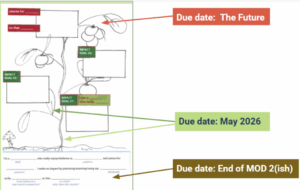 This iterative approach ensures that purpose statements are action-oriented and meaningful, tying core values to potential projects, research, or presentations. Across Humanities, IDL, and Community, students engage in multiple layers of reflection, experimentation, and collaborative feedback — a true transdisciplinary experience that mirrors how complex problem-solving happens in the real world.
This iterative approach ensures that purpose statements are action-oriented and meaningful, tying core values to potential projects, research, or presentations. Across Humanities, IDL, and Community, students engage in multiple layers of reflection, experimentation, and collaborative feedback — a true transdisciplinary experience that mirrors how complex problem-solving happens in the real world.
Each round of refinement builds both clarity and confidence, preparing students for their Grade 8 Summit presentations in May, a culminating moment this year to be held alongside the Grade 8 Ceremony. By then, purpose statements become more than words on a page — they are stories students are ready to own and share.
The Gift of Reflection
The Grade 8 Summit isn’t just about a final presentation — it’s about developing the muscles of reflection, storytelling, and self-knowledge at a pivotal age. By the time students stand in front of their families and peers in May, they will not only articulate what their purpose is today, but also demonstrate the courage to claim it out loud.
“In a world that is constantly shifting — with AI, social pressures, and future uncertainties — the question isn’t just What will I do?” says Day. “It’s Who do I want to be? And that’s exactly what this work empowers our students to explore.”
At Mount Vernon, the Grade 8 Summit is more than a project — it’s an intentional, transdisciplinary design, preparing learners not only for Upper School, but for the purpose-driven lives they are called to lead.


